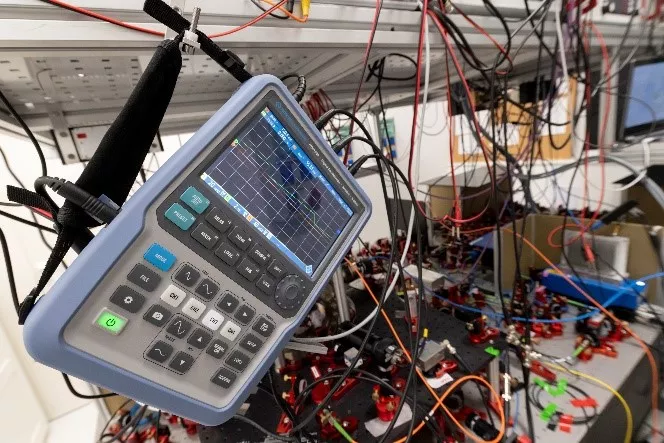The ELKH Wigner Research Centre for Physics (Wigner RCP) has been awarded over 200 million HUF in funding from the Hungarian National Research, Development and Innovation Fund for the implementation of four quantum information projects. The main objectives of these projects are the creation of a small quantum processor that can operate under ambient conditions, the advancement of quantum-based computing and measurement techniques, the testing of an internationally developed quantum converter, and the exploration of the possibilities of hybrid usage of quantum and classical computers.

Measurements at the Quantum Optics Laboratory of Wigner RCP
In addition to German, Dutch, French, and Belgian partners, Hungarian physicists from the Wigner RCP, led by Ádám Gali, are also participating in the creation of a small quantum processor that can operate at room temperature under normal office or home conditions. The success of the MAESTRO consortium is foreshadowed by the fact that the operation of such quantum hardware has already been described at a theoretical level, partly by the consortium members. Therefore, the current objective is to prepare for production. The results could open up new perspectives for quantum information science, which currently relies on expensive systems that operate in laboratory conditions and are remotely accessible. Among other things, the development of quantum communication and the distribution of quantum keys necessary for quantum encryption may emerge.

Quantum Optics Laboratory at Wigner RCP
Ádám Gali also leads a Hungarian group within an international project that aims to develop quantum metrology methods. German, Lithuanian, French, Swiss, and Hungarian researchers can achieve breakthroughs in nanoscale imaging and sensing by advancing quantum-based measurement techniques. Therefore, they aim to make diamond-based quantum sensors usable under special conditions such as extremely strong magnetic fields, high pressures, and mechanical tensions. To this end, the researchers first work on developing the theoretical description and quantum optical protocols that lay the foundation for the development. Following this, they focus on creating systems capable of implementing measurement protocols and overcoming the limitations of the most commonly used diamond sensor, the nitrogen-vacancy centre. The project participants hope that their findings will contribute to understanding the behaviour of similar centres under extreme conditions and provide a better description of diamond as a host of quantum systems.
The project led by Péter Domokos has set itself the goal of establishing and operating a well-controlled experimental system for testing a compact, quantum-microwave-optical frequency converter integrated on a chip, designed within an international project. This system could serve as the foundation for numerous quantum technology applications in the future. The construction relies on technological innovations related to the physics of cold atoms, enabling new experiments in the future.
The project led by Zoltán Zimborás focuses on further developing and establishing a solid foundation for the theory of hybrid quantum-classical computations. The essence of these computations is to combine the power of quantum and classical processors by running intermediate calculations that can be efficiently performed in a classical manner on classical computers, thereby accelerating the overall computation. These methods play an important role in understanding and harnessing the capabilities of quantum computers. However, despite their significance, there is currently no unified, mathematically rigorous description of these quantum-classical computations. Thus, the project aims to achieve this and gain a comprehensive understanding of the near-future possibilities of hybrid quantum-classical computations.